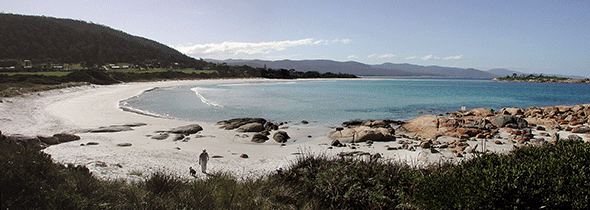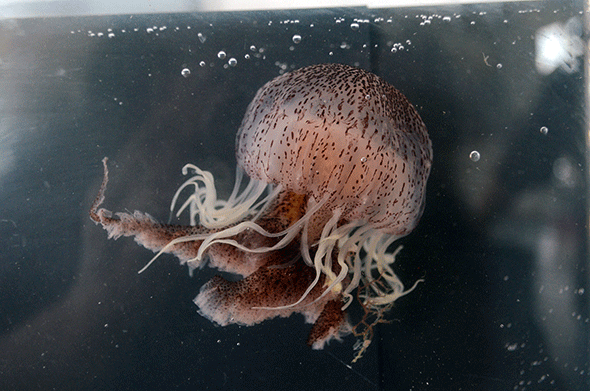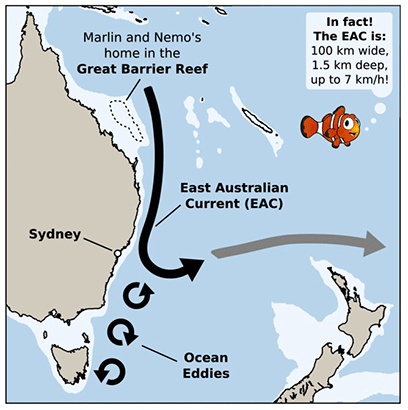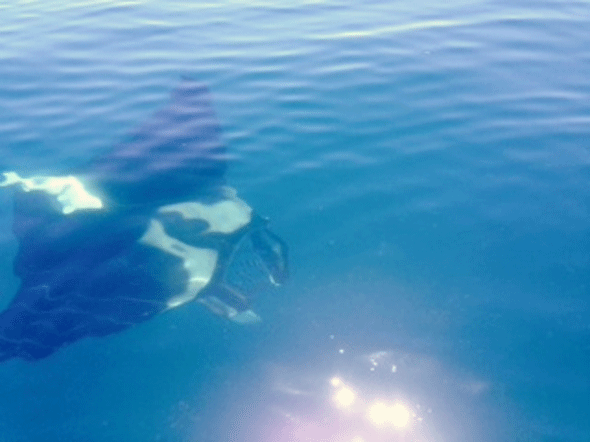
|
Published: 2 July 2012
Trees and non-flying mammals: a hollow understanding
For many of Australia’s mammals, tree hollows are critical habitat. Ross Goldingay argues that to make informed decisions about the conservation of species that use tree hollows, we need more research on the role that hollows play, and on the shelter needs of the animals that use them.
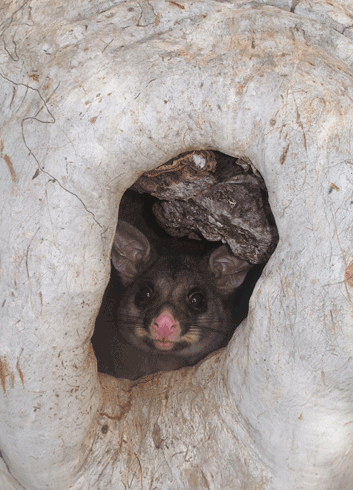
|
|
A common brushtail possum uses a large trunk hollow (entrance diameter >10 cm) in a scribbly gum (Eucalyptus haemastoma). Credit: Photo by Ross Goldingay.
|
How much do we really know about the habitat needs of Australia’s tree-dwelling mammals?
We know that about 40 species of non-flying mammals use hollows or cavities within trees for shelter, and that many of these species depend on such sites for their survival. Among these are two of Australia’s most endangered mammals: Leadbeater’s possum in Victoria, and the mahogany glider in north Queensland. However, our knowledge of the kinds of hollows required – and how their on-going availability may be managed – is poor.
In Australia, hollows are produced as a consequence of fungal decay, insect attack and fire. Trees typically need to be at least 100 years old before these agents start to hollow out the heart wood. Harvesting trees for timber or firewood, clearing for agriculture, tree dieback and increased fire frequency all lead to a gradual loss of very old trees from our forests and woodlands, therefore reducing hollow availability.
I recently reviewed available information on the characteristics of tree hollows used by Australian non-flying mammals, published in the Australian Journal of Zoology. In addition to possums and gliders, other non-flying mammals that use tree hollows include dasyurid marsupials, such as the brush-tailed phascogale and the agile antechinus, and rodents, such as the brush-tailed rabbit rat.
Tree hollow characteristics have been described for less than half of the species that use them. In fact, only six species (15 per cent of tree-dwelling mammal species) have been studied in sufficient detail to assist their management and conservation.
Some hollow-using species are not completely reliant on tree hollows and will use other shelter types. However, without detailed studies, it is difficult to reach a conclusion about the role tree hollows play, and whether shelter needs are adequate in different locations.
All species studied use standing dead trees (stags). A key reason why stags are favoured is their higher probability of containing hollows than live trees. One concern that arises where mammals rely heavily on stags is that these trees may only remain standing for several decades. If the surrounding live trees have not reached at least 100 years of age when the stags collapse, then a shortage of shelter sites will result. This will force the local population of hollow-using wildlife into decline or collapse. This scenario becomes more probable when wildfires are factored in, because they make stags much more prone to destruction or collapse.
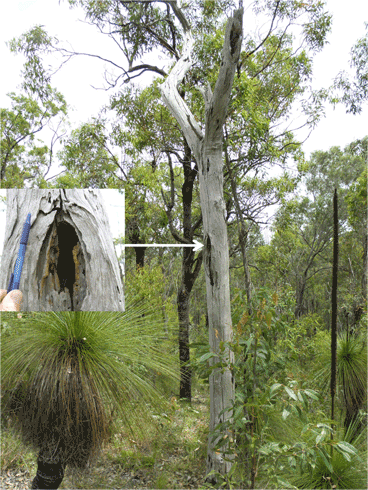
|
|
Standing dead tree (stag) used as a den by a squirrel glider in Brisbane. The arrow shows the location of the hollow entrance shown in the inset. Credit: Photos by B. Taylor.
|
Some tree species also produce hollows more readily than other species, forming them at a much smaller size and younger age. This explains why these tree species are preferred by some mammals. In some cases, however, preferences for particular tree species may simply be because they have better-quality hollows.
For example, in north Queensland, flooded gum (Eucalyptus grandis) accounted for 91 per cent of the dens of the yellow-bellied glider, but just 11 per cent of the trees in the forest. Hollow availability was not quantified, but it appeared that flooded gum was favoured due to the size of its hollows (author’s personal observation).
Scenarios of hollow-bearing tree loss, such as the loss of stags due to wildfire, begin to highlight the challenge to land managers. There might be sufficient numbers of hollows now, but will this be the case in 20 or 50 years’ time? This question can only be answered by field studies that document the rate of tree fall over a period of years. These data and other information can then be used in computer simulations to predict future outcomes. Very few studies in Australia document rates of fall of hollow-bearing trees. Because these rates will vary across environmental gradients, local studies are required.
One curious finding arising from my review was the variation among studies in the number of hollow-bearing trees used for shelter by individuals of some species. The number used was mostly in excess of five trees, but this varied with study length; the longer the study, the greater the opportunity for additional trees to be used. The mountain brushtail possum was recorded as having used 23 trees, the highest number for one individual in any study.
It appears that the number of trees used by individuals is, in part, influenced by local availability. Nevertheless, the average number needed could be important: if land managers need to manage individuals of a species, it would be useful to know how many tree hollows should be provided. Available data are insufficient to answer this at present.
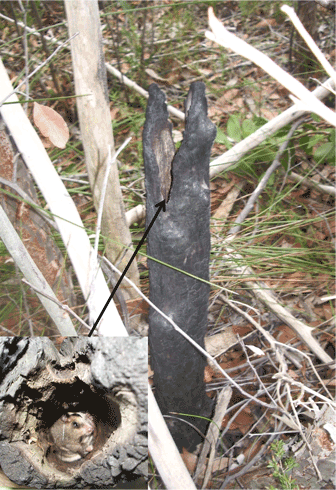
|
|
A burnt stump used as a den by a radio-collared male eastern pygmy-possum in Royal National Park, Sydney. The inset shows the view looking into the stump from above. Credit: Photos by R. Goldingay.
|
Why do individual animals need more than one tree hollow? A set of hypotheses have been advanced to explain this:
-
to minimise predation risk
-
to minimise foraging costs – moving hollows may reduce distances required to travel to sources of food
-
to provide home-range defence – shifting of den sites may more readily advertise that an area is occupied, pre-empting the incursion of trespassers
-
to optimise thermal buffering – den sites vary in their thermal properties, which may require changing dens on a seasonal basis to ensure exposure to an optimal microclimate in the nest
-
to reduce the parasite load – fleas, ticks and lice, for example, build up in shelter sites.
These hypotheses are not mutually exclusive, with several potentially applying to a given species.
Increasingly, artificial hollows (nest or roost boxes) are being installed to compensate for the loss of hollow-bearing trees. However, there is much debate about how effective nest boxes are as replacements for natural hollows. Little is known, for example, about how frequently nest boxes are used by different species. There is also debate about whether the cost of providing and maintaining nest boxes on a large scale and over a long period is justified, given the lack of knowledge about outcomes.
It is clear that nest boxes should not be used to justify the removal of hollow-bearing trees or unsustainable forestry practices. However, nest and roost boxes do play an important role in alleviating hollow loss caused by the expansion of major roadways and mine sites in eastern Australia, and by urbanisation.
This brings us back to the need to improve the state of scientific knowledge of species that depend on tree hollows for their survival. Here, nest boxes offer a way forward in the search for knowledge. Nest box characteristics, such as size, placement and number, can be easily manipulated to gain an understanding of the key attributes of tree hollows favoured by hollow-using mammals. Such knowledge may then be used to manage natural hollows and conserve the species that depend on them.
Dr Ross Goldingay is Associate Professor in the School of Environment, Science & Engineering at Southern Cross University, and is currently the editor of Australian Mammalogy, the journal of the Australian Mammal Society.
More information
Goldingay RL (2011) Characteristics of tree hollows used by Australian arboreal and scansorial mammals. Australian Journal of Zoology 59, 277–294.
Goldingay RL (2009) Characteristics of tree hollows used by Australian birds and bats. Wildlife Research 36, 394–409.
Goldingay RL and Stevens JL (2009) Use of artificial tree hollows by Australian birds and bats. Wildlife Research 36, 81–97.


